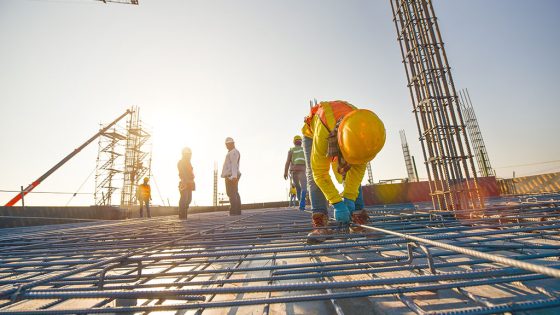Output in the construction sector is forecast to fall back because of the impact of the rise in the cost of mortgages on housing demand.
The Construction Products Association (CPA) projected that total construction output would fall by 2.9 per cent this year, before recovering by 2 per cent in 2025.
The “slightly more negative” projection than the CPA’s last announcement in the spring is down to a stalling of recovery in private housing new-build, as well as in the repair, maintenance and improvement sector (RMI), it said.
“This is in response to a slowdown in demand and sentiment in the broader housing market since Easter following the uptick in mortgage rates,” according to the CPA.
The association previously projected that sector output would contract by 2.2 per cent this year.
The CPA said a reduction in mortgage rates at the end of last year prompted the housing market to start to recover, but it was stilted by an uptick in mortgage rates in the spring. The RMI sector is now expected to contract by 6 per cent in 2024, then recover by 2 per cent in 2025 and a further 4 per cent in 2026.
The association also warned that a “significant, sustained recovery” would only happen once homebuyers and homeowners started to benefit from real wage growth, cuts in interest and mortgage rates, and economic and political stability.
The CPA predicted that this would start later this year, but would “have its greatest impact” in 2025.
Its forecasts for other key construction sectors remain similar to earlier projections. “Many firms [are] operating in industrial, commercial refurbishment and fit-out or working on major infrastructure projects that continue to experience robust activity,” it said.
The infrastructure sector is expected to continue on its strong trajectory, thanks to progress on projects including the Hinkley Point C nuclear power station and the HS2 high-speed rail megaproject.
The CPA expects output to remain flat this year, and then grow by 1.7 per cent in 2025 and 3.9 per cent, thanks to growth across the spectrum, in particular the energy generation and transmission sectors.
The commercial sector’s output is expected to contract by 3 per cent this year and a further 1 per cent next year – with recovery expected in 2026. The association warned that large commercial projects were being “held back” by uncertainty over the strength of the UK’s economic recovery.
The CPA said in its analysis that there were “increasing concerns” in the construction industry about potential uncertainty around the impact of the Building Safety Act, the effect of which, it warned, “may delay the delivery of some larger projects”.
It said such uncertainty already “appear[ed] to be hindering some large projects”.
“Some of these appear to be delayed due to increased scrutiny and additional administration, documentation and checks, whilst other delays appear to be due to uncertainty over what is required by each party and what responsibilities each party has,” it said.
But the CPA said post-Grenfell cladding-remediation work should “continue to provide a stream of activity” for the sector in the long term.
This year’s general election also had an impact, with the CPA pointing to a “wait and see” approach, as major clients hesitated to see which public sector schemes would get government support.
“These projects should now go out to tender or be signed off relatively quickly,” it said.

